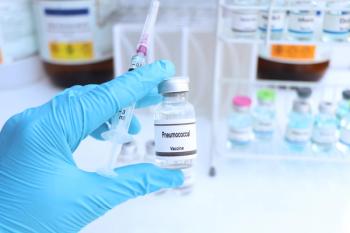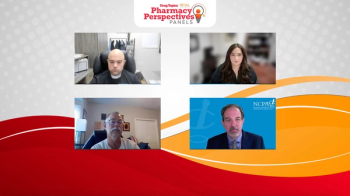
HPV Vaccine Is Effective as Prophylactic Among Sexually Active Young Women
Among participants in the CATCH trial, researchers explored the relationship between HPV vaccination and incidence of infection.
Human papillomavirus (HPV) vaccination was found to be an effective prophylactic measure for young, sexually active women, despite showing no therapeutic effects for existing infections.
“HPV—one of the most common sexually transmitted infections, with an estimated 80% of sexually active individuals contracting the virus at least once—is causally associated with cervical cancer, which ranked in 2022 as the fourth most common cancer among women,” wrote authors of study findings published in Vaccine.1 “Clinical trials assessing the efficacy, immunogenicity, and safety of HPV vaccination have consistently demonstrated that vaccination reduces the risk of new HPV infections…with the greatest protection observed in individuals who are vaccinated at younger ages and prior to the onset of sexual activity.”
According to CDC data, around 48,000 new cancer cases are discovered annually in regions of the body where HPV infections are often found. Of the 47,984 new reports each year, HPV is known to cause up to 37,800 of these new cases, or close to 79%.2 With previous evidence regarding the link between HPV infection and various cancers, experts agree that HPV vaccination at a young age is the best approach to reducing cancer risks in adulthood.
READ MORE:
For cervical cancer specifically, in 2020, the World Health Organization introduced the Global Strategy to Accelerate the Elimination of Cervical Cancer. In its plan, the organization committed to a 2030 target of ensuring that 90% of girls worldwide receive HPV vaccination by the age of 15. However, despite these commitments amid previous evidence regarding HPV infections and cancer, vaccination rates remain low.3
While HPV vaccination is known to reduce a variety of long-term risks for patients, researchers believe more can be understood regarding vaccine efficacy, uptake, and how it works to clear or prevent HPV infection.
“Only randomized controlled trials have compared infection clearance based on HPV vaccination status,” continued the authors of the study.1 “In this context, the primary objective of this analysis was to assess the association between self-reported HPV vaccination and the incidence and clearance of vaginal HPV infections of vaccine-targeted types among young, sexually active women enrolled in the Carrageenan-gel Against Transmission of Cervical Human Papillomavirus (CATCH) trial, which was conducted in Montreal, Canada, between 2013 and 2021.”
To reach the primary objective in the current study, researchers used data from the CATCH randomized control trial, which explored the efficacy of a carrageenan-based gel in decreasing incidence and prevalence of vaginal HPV infections among young, sexually active women. Now exploring participants’ HPV vaccination status, researchers discontinued the study arms and conducted an observational cohort framework.
In addition to the CATCH trial data included in the current study, researchers also followed up with participants to collect their self-reported vaccination status, dates, number of doses, and brands. They then conducted estimates to determine the incidence and clearance of HPV infection.
The study included 461 participants, and 55.5% had received an HPV vaccination.
“We found that HPV vaccination—assessed through 3 different self-report sources—was protective against incident infection with vaccine-targeted HPV types but had no effect on the clearance of baseline infections,” they wrote.
Overall, among this cohort of sexually active young women, HPV vaccination was found to have significant efficacy in preventing vaccine-targeted HPV infections. However, it was unable to show significant improvement for patients experiencing HPV infections at the baseline period of the study. According to the researchers’ results, HPV vaccination was successful as a prophylactic but not in clearing patients’ existing HPV infections.
Although the HPV vaccine—whether the Gardasil or Cervarix formulation—is not recommended as a therapy to treat HPV-related infections, studies such as this further bolster support for the recommendations regarding HPV vaccination among younger women.
“In conclusion, our findings among young, sexually active women provide additional evidence of the real-world effectiveness of HPV vaccination in preventing incident infections with vaccine-targeted HPV types, with estimated vaccine effectiveness ranging between 59% and 80% (depending on vaccine status definition), while also reinforcing that HPV vaccination is strictly prophylactic and does not have therapeutic capabilities,” concluded the authors.1
READ MORE:
Pharmacy practice is always changing. Stay ahead of the curve: Sign up for our
References
1. Kassam P, Laurie C, El-Zein M, et al. Impact of HPV vaccination on the incidence and clearance of HPV infections in sexually active young women. Vaccine. 2025;63:127632. https://doi.org/10.1016/j.vaccine.2025.127632
2. Cancers linked with HPV each year. CDC. June 11, 2025. Accessed August 26, 2025. https://www.cdc.gov/cancer/hpv/cases.html
3. Han J, Zhang L, Chen Y, et al. Global HPV vaccination programs and coverage rates: a systematic review. EClinicalMedicine. 2025;84:103290. doi:10.1016/j.eclinm.2025.103290
Newsletter
Pharmacy practice is always changing. Stay ahead of the curve with the Drug Topics newsletter and get the latest drug information, industry trends, and patient care tips.






































































































































